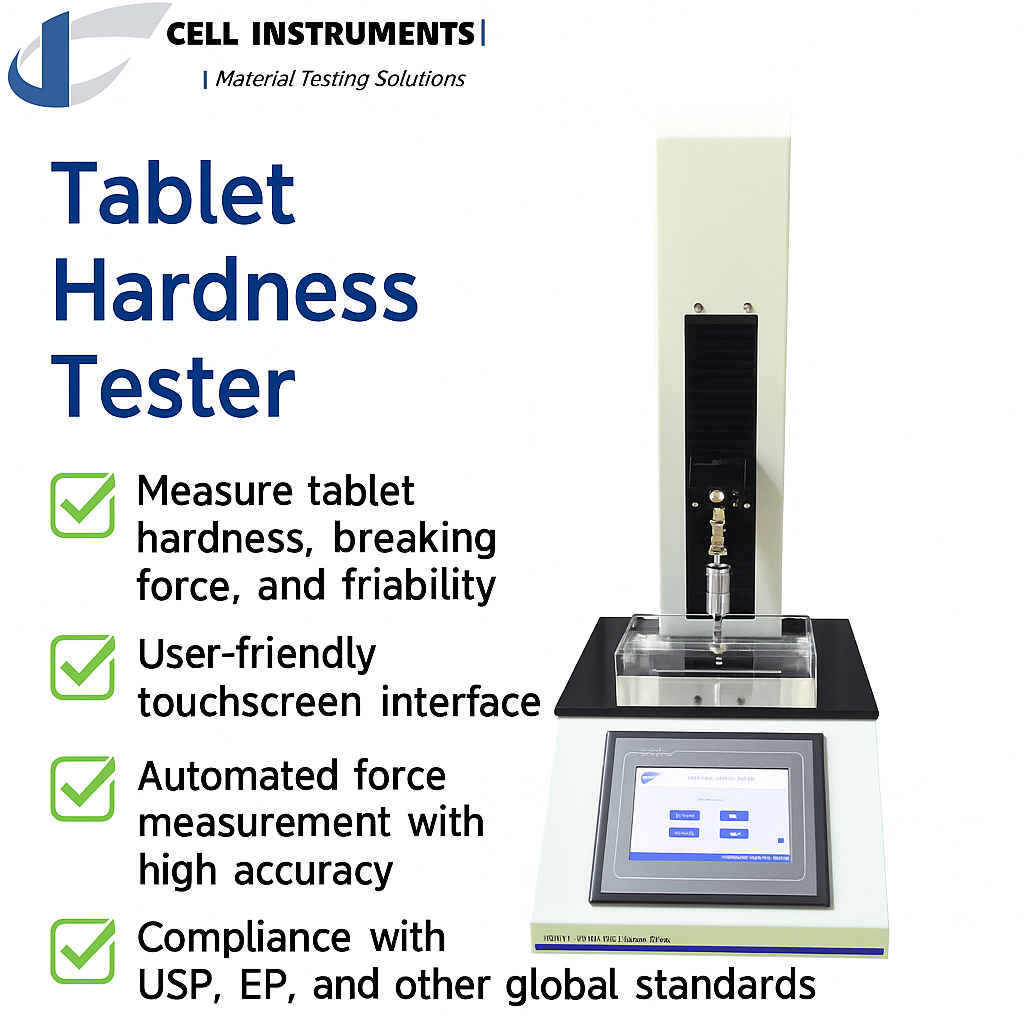USP 1217
Tablet Hardness Test Method
Tablet strength is a critical quality parameter in pharmaceutical manufacturing. Ensuring tablets can withstand mechanical stresses during production, packaging, and transportation is essential for both regulatory compliance and patient safety. According to USP <1217> Tablet Breaking Force, comprehensive testing of hardness, friability, and tensile strength is fundamental for determining mechanical integrity. In this article, we explore how to implement the tablet hardness test, conduct accurate compression test procedures, evaluate friability, and determine tablet breaking force—all while aligning with the USP standard.
Essential Tests Covered by USP
Tablet Hardness Test and Breaking Force
Often misunderstood as surface hardness, the tablet hardness test in USP standard actually refers to the breaking force—the pressure needed to cause the tablet to fracture. This is a key indicator of tensile strength and compression integrity. The test is typically conducted using automated testers like the MPT-02 Tablet Hardness Tester from Cell Instruments, which ensures consistent loading rates and precise force application.
Қысу сынағы
The compression test involves diametrical loading of tablets, especially round tablets. The force is applied between two platens until the tablet breaks. For special shapes or scored tablets, alternative methods such as three-point bending tests are recommended. The rate of loading, platen parallelism, and calibration precision directly affect test reliability.
Friability Test (as per USP )
While USP <1217> emphasizes breaking force, friability testing is covered under USP <1216> . This test simulates tablet tumbling in a rotating drum to determine brittleness және abrasion resistance. Weight loss after tumbling quantifies friability. An acceptable weight loss is typically ≤1%. This test complements the hardness test by revealing how tablets hold up under dynamic mechanical stress.
Understanding USP 1217 and Its Importance
USP <1217> outlines the procedures for evaluating tablet strength, focusing on mechanical properties such as breaking force, crushing strength, және tensile strength. These parameters are crucial for ensuring tablets maintain structural integrity until they reach the consumer. The standard supports consistent testing practices across industries, from pharmaceuticals to nutritional supplements.
Breaking force testing, as defined in this standard , uses precision mechanical or motorized testers that apply a compressive load to tablets until fracture occurs. These measurements guide product development and ensure сапасын бақылау by identifying potential weaknesses in formulation or manufacturing.
Three-Point Bending Test for Special Tablet Shapes
Flat or capsule-shaped tablets may not break consistently under compression. In such cases, the three-point bending test provides a better assessment of tablet breaking force and internal structure resilience. This setup supports tablets at both ends and applies a breaking force at the midpoint, delivering accurate tensile strength data especially useful in tablet brittleness test evaluations.
Tablet Brittleness and Tensile Strength Analysis
Brittle tablets are more prone to chipping, cracking, or breaking during handling. The USP standard encourages calculating tensile strength based on breaking force, tablet diameter, and thickness. This analysis is particularly useful for benchmarking different formulations and ensuring dosage uniformity.
Modern testers, such as the MPT-02 Tablet Hardness Tester, offer programmable loading speeds, consistent displacement control, and high-resolution digital readouts, supporting accurate tensile and compression data collection.
Choosing the Right Tablet Hardness Tester
To meet the performance requirements of USP <1217> , testers must provide:
Parallel, precision-ground platens
Constant loading rate or platen movement
Accurate force measurement in newtons
Real-time data logging and calibration capability
Cell Instruments’ MPT-02 is purpose-built for such applications. With digital load cells, programmable test parameters, and compliance with international standards, it’s ideal for R&D and routine tablet strength verification.
Guiding Your Testing with Confidence
Understanding and applying USP <1217> ensures that tablets meet global standards for mechanical strength. Whether you’re performing a tablet hardness test, compression test, friability test, or evaluating tablet brittleness, following this framework improves product quality, reduces failures, and supports regulatory compliance.
Жасуша құралдары supports professionals in pharmaceutical, food, and packaging industries with cutting-edge solutions like the MPT-02 Tablet Hardness Tester, empowering accurate, reproducible, and standard-compliant testing across the board.


